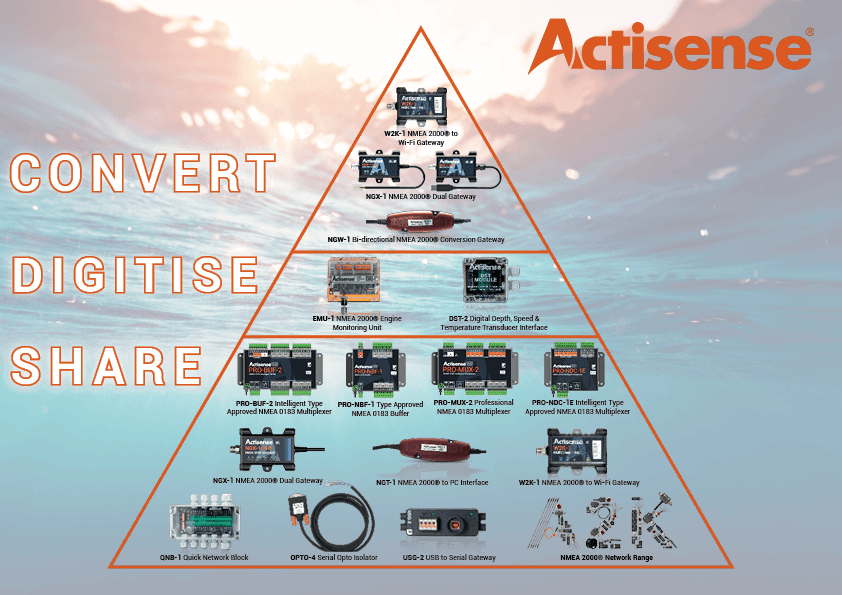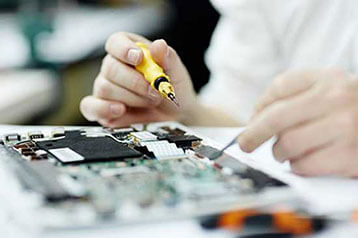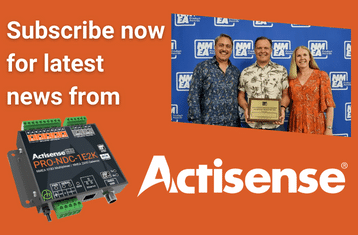
As Christmas comes around again, what better gift to get yourself (or that special boater in your life) than some new kit for your boat! Of course, the equipment you buy is dependent on the technology and systems already on-board the vessel, but take a look at our top 6 ideas…
Autopilot – ComNav P4
One of the best value autopilots on the market is the state-of-the-art ComNav’s P4, with both NMEA 0183 and NMEA 2000 compatibility. Boaters will enjoy the highly intuitive menu that features on its 5.7-inch color display. The system also benefits from a digital encode switch, making command execution and course adjustments simple and straightforward. The P4 offers a built-in thruster assist feature which makes docking stress-free. Comnav also offers a Legacy Remote expander which allows you to use your existing older remotes (101/211/TS202 series), which will save thousands of dollars. The device is field upgradeable using an Ethernet connection.

Wireless NMEA 2000 Gateway – W2K-1
Chances are, you own a smartphone or tablet with wireless capability and a charting / marine application installed… something like Navionics is a prime example of this. Having a wireless gateway installed allows you to have your AIS, GPS, Wind, and speed data (plus much more) all available on your phone via an application.
There’s a number of benefits to having a wireless gateway installed, including the time and cost reduction in installing it when compared to a hard-wired alternative. It also offers much greater flexibility and visibility of data. With Wi-Fi, there is no longer a requirement to be stood in the same place as your MFD or analogue instrument displays. The addition of Wi-Fi on-board is a no-brainer, however, it is not advisable to use it as the primary method of data transfer and communication. A hard-wired ‘core’ network for safety-critical devices is always recommended.
A secondary benefit to owning a Wireless Gateway is that some also have logging capability. The logging allows for post voyage analysis of data, problem diagnosis, and creating + storing logbooks, essentially giving you a voyage data logger and wireless gateway in one complete device.
With future updates incoming, the W2K-1 would be the perfect gift for a boating enthusiast.

AIS (Automatic Identification System) – Garmin AIS 800 Transceiver
AIS is arguably the most important piece of kit to have onboard, especially when it comes to safety. AIS is essentially a collision-avoidance system, allowing all vessels equipped with AIS to see one another. The AIS on-board will transmit vessel call sign, MMSI, load info, type of vessel, etc along with Position, Course, and speed when combined with a GPS. A lot of AIS systems and devices contain an internal GPS, but they can also utilise external GPS equipment for improved accuracy.
This information is automatically transmitted and is used by both Shore Stations and other boaters. It allows maritime traffic to be managed safely via Shore Stations, whilst also letting other nearby boaters know where you are at all times.
Whilst there is no current requirement for small craft and leisure vessels to have an AIS onboard at the moment, it is certainly worth investing in from a safety stand-point. Combine an AIS with an MFD / Chartplotter with AIS Overlay, and you instantly have a full picture of your location, all AIS-equipped vessels near your location, and their course.
The argument posed is ‘why would I need AIS, I can see what’s around me?’… Whilst this may be true, and you’ll do well to not see a 300T Cargo Ship coming towards you, but what about their captain, is he going to see you? Relying on eyesight alone means you cannot see everything at all times… at the end of the day, you’re not an owl. The captain of the cargo ship will have systems onboard for AIS that will also notify him of a potential collision if the same course is continued on, but it’s going to take them a lot longer to adjust than it will a leisure craft owner.
In short, if both parties have AIS, they see you, you see them, hopefully, a potential collision is then avoided!
We recommend the Garmin AIS 800 Transceiver.
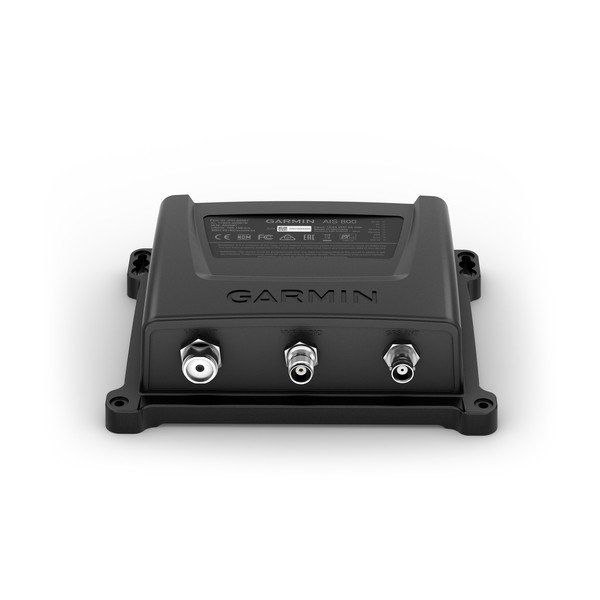
Bi-Directional NMEA Conversion Gateway – NGW-1
An NMEA Conversion gateway is a great way of ‘upgrading’ your legacy NMEA 0183 electronic devices at a fraction of the cost in comparison to purchasing new NMEA 2000 ones. A prime example of this is a GPS, where an NMEA 0183 GPS can be brought onto the NMEA 2000 network for £150-200 via a conversion gateway, instead of purchasing a new NMEA 2000 GPS for a much higher price.
These gateways are usually bi-directional too, meaning that if there is data coming from an NMEA 2000 instrument that the 0183 device needs, it will receive it provided there is a suitable conversion available.
Of course, we recommend our own NGW-1.
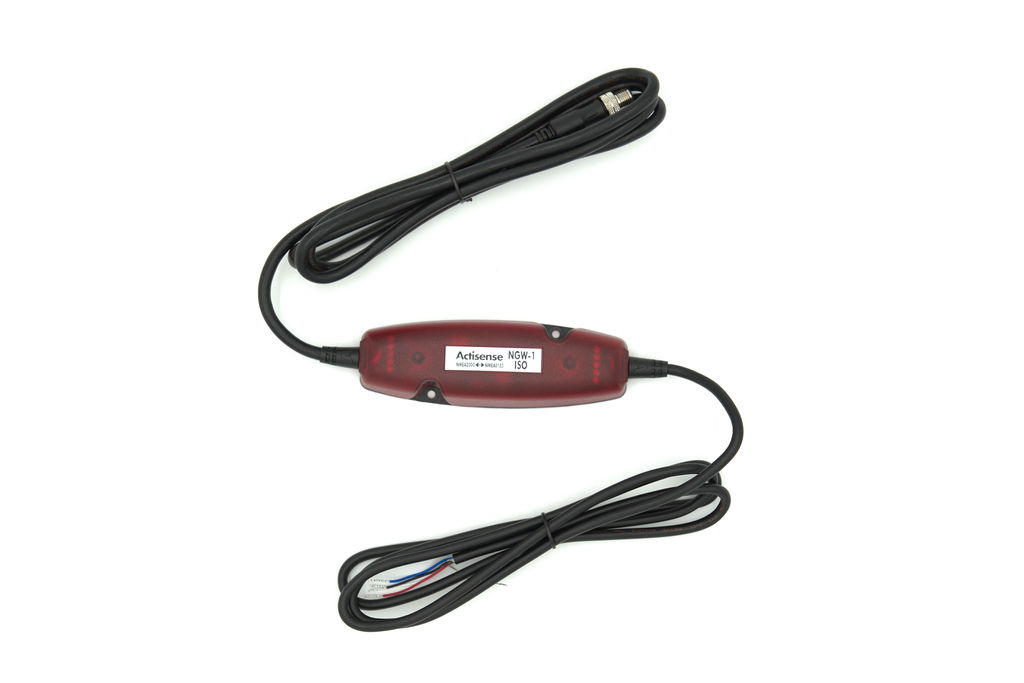
Engine Monitoring Devices (Analogue to NMEA 2000) – EMU-1
The same principle of upgrading your existing equipment applies here with Engine Monitoring devices! A large portion of engines currently in vessels are analogue, utilising analogue senders and gauges which then display various readings for pressure, temps, etc… But, what if you could get all that data onto your MFD, so it’s clear, easy to read, and can also be tied in with alerts and alarms to notify you of any issues? Well, the good news is you can, using an analogue to digital engine monitoring unit.
These devices monitor the analogue signals fed into them and are capable of outputting NMEA 2000 PGNs which contain the various parameters that your analogue gauges are displaying (once configured). This removes the issues of optical error and age-related failure/inaccuracies with analogue gauges. Alongside this, you can set your MFD to give a visual and audible (model-dependent) warning for any readings which are hitting an extremity. This gives you peace of mind, but also means that you have engine data in the same location as your GPS, AIS, Depth and so on, all in the MFD.
The Actisense EMU-1 is an industry favorite.

MFD (Multi-Function Display) – Raymarine
MFDs are like the ‘brain’ of an NMEA 2000 network, as they can display a wide range of NMEA data from AIS to fish finder, and the latest models also support Radar and Video. The capability of the MFD varies depending on the model… of course, the more expensive ones have more features. Something like a Raymarine Axiom MFD can display a huge array of data.
A lot of the previously mentioned devices all link to the MFD, which really does highlight that the MFD is the brain of the NMEA 2000 system.
Whilst you must be careful to not make the MFD cluttered and not clear, the power they have is almost invaluable. Imagine a single or dual screen where you have your vessel, the route it’s on, the AIS targets nearby, the water depth, tide information, and GPS data all on one display… that is the purpose and capability of an MFD. Not only does this improve safety as it provides greater visibility, it also makes tasks like navigation and cruising + surveying and fish finding much easier.
We recommend the Raymarine Axiom.

